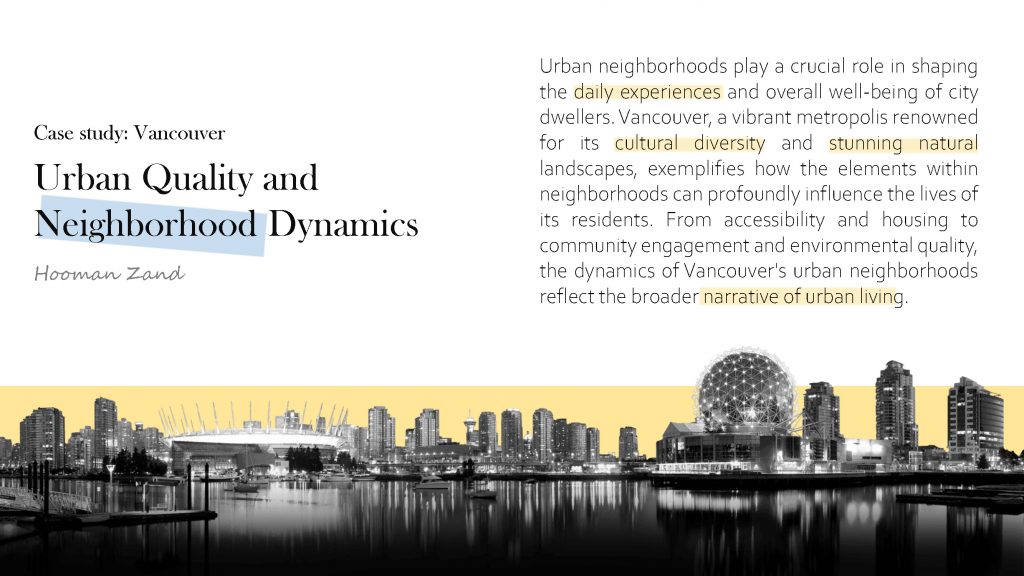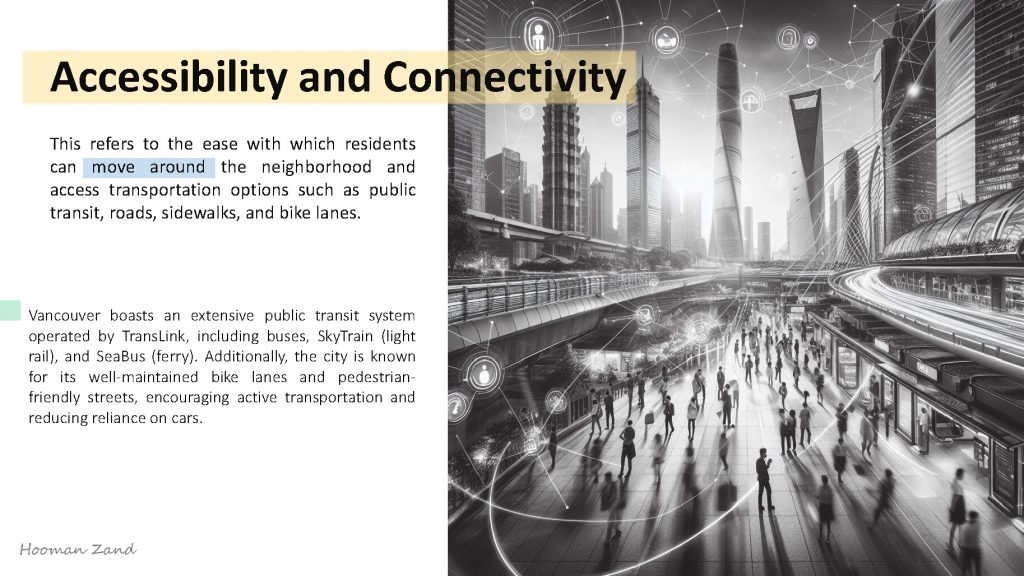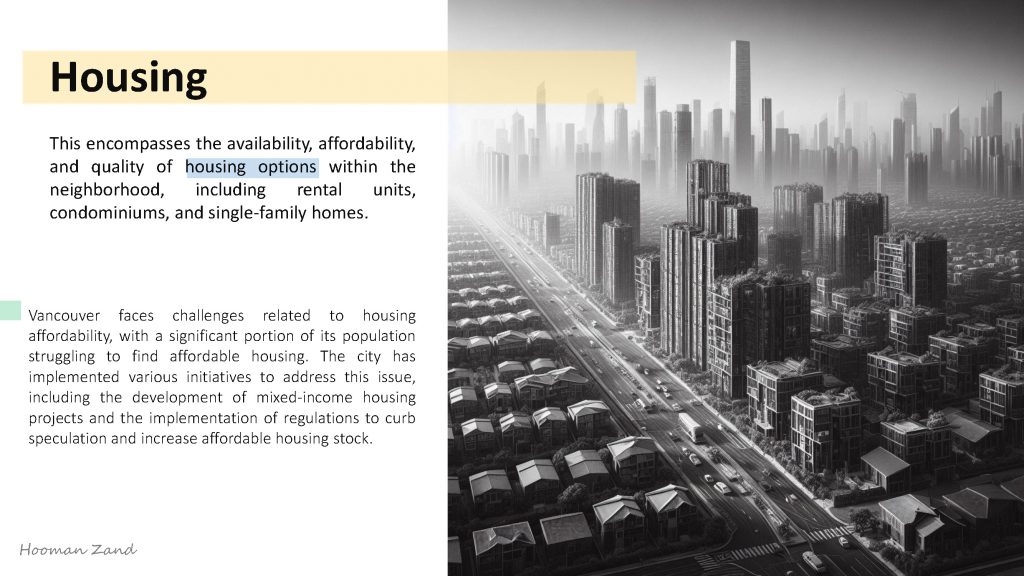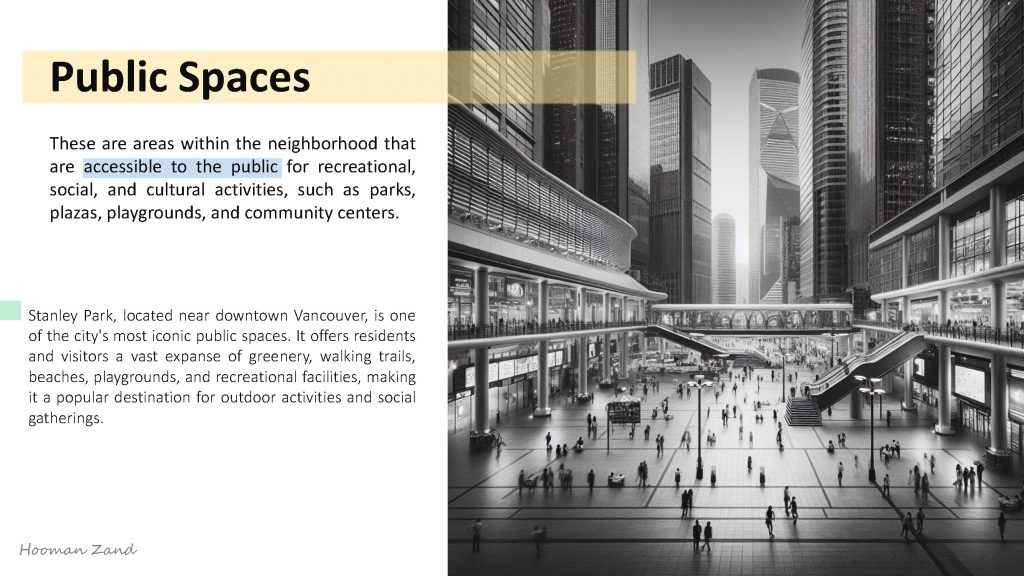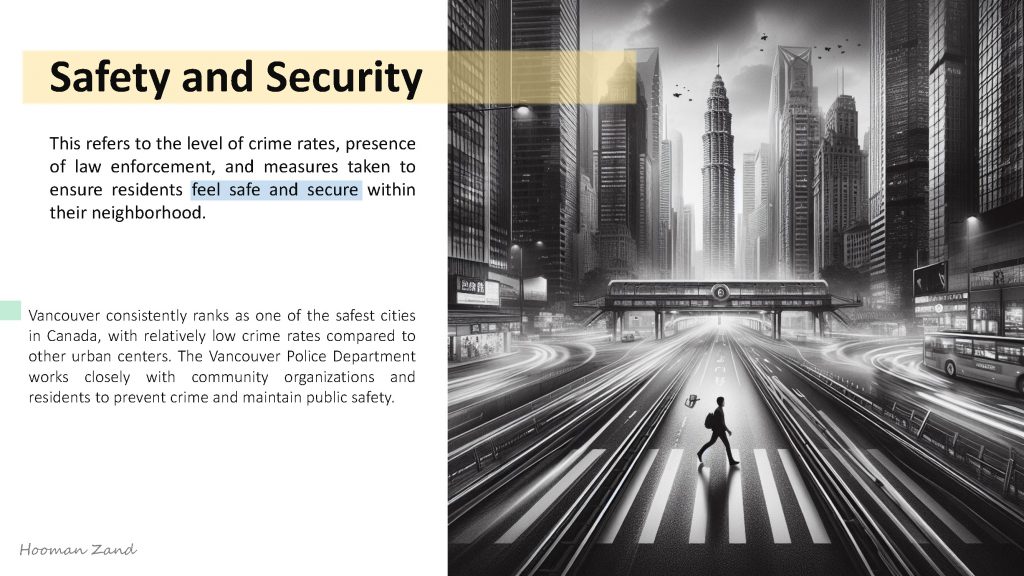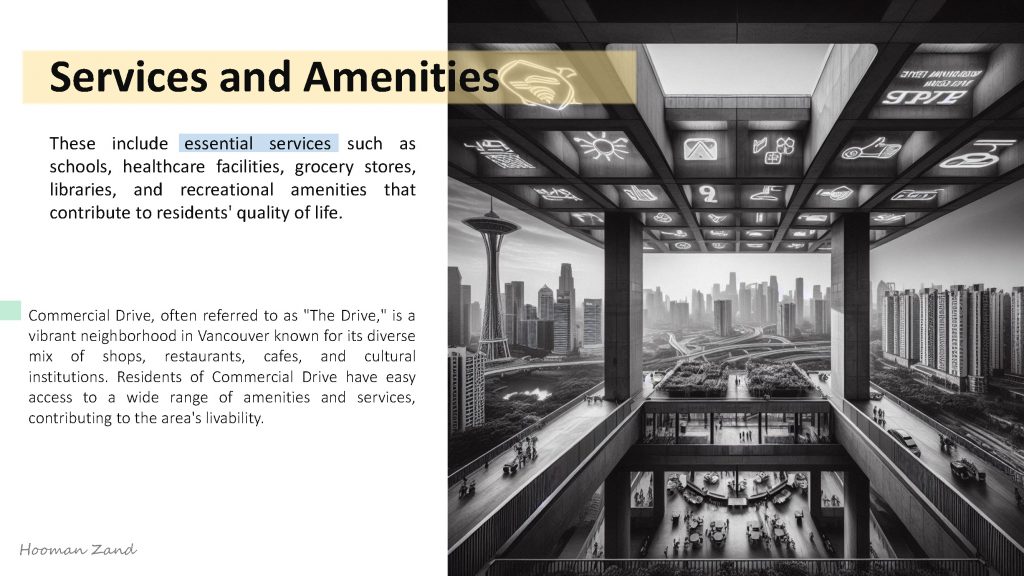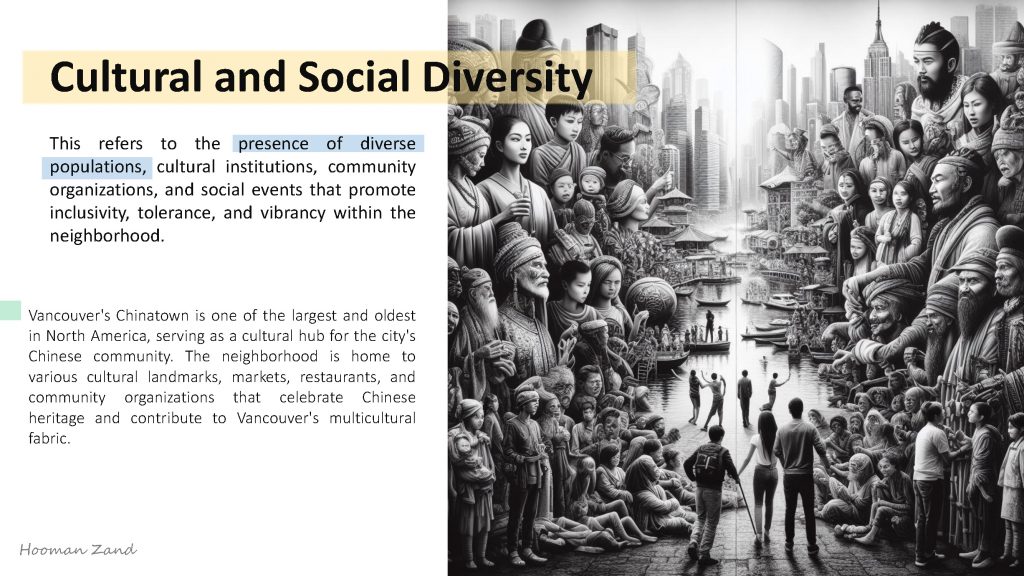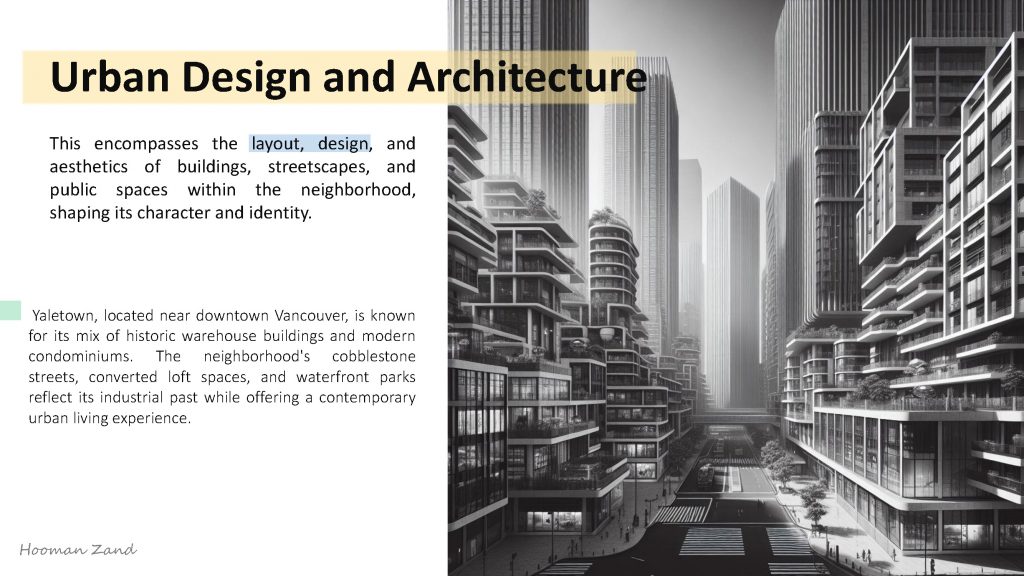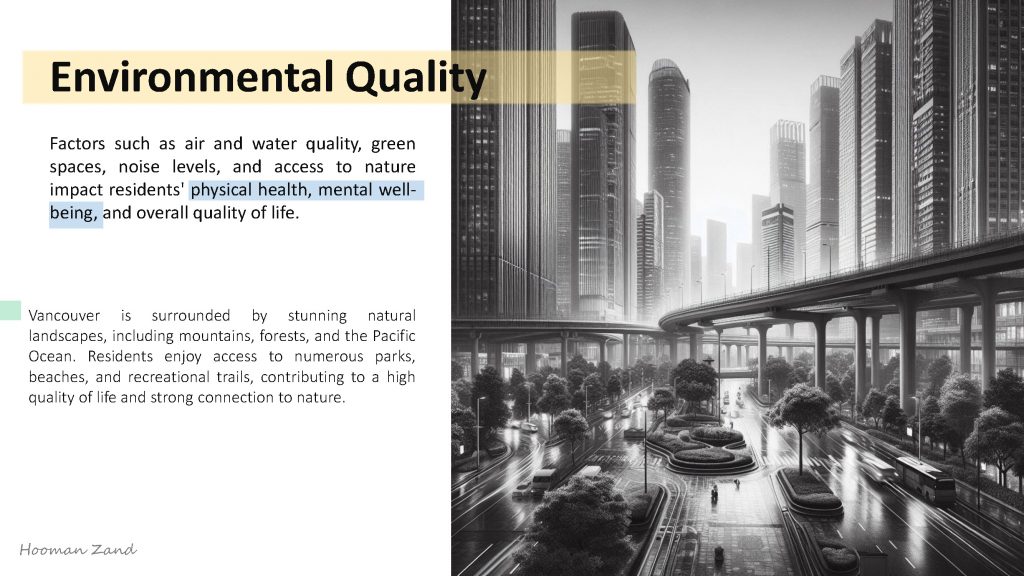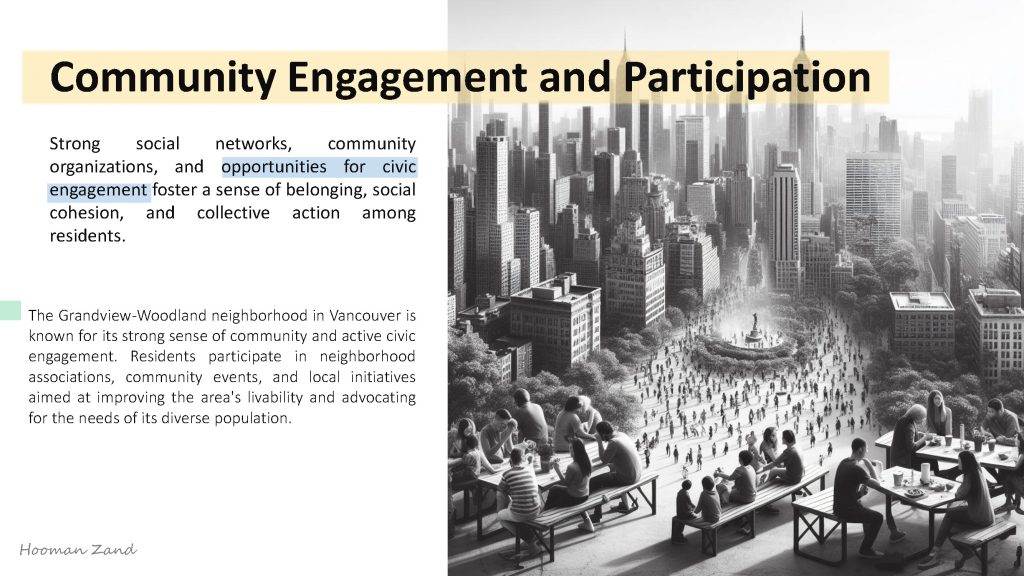Urban Quality and Neighborhood Dynamics
Urban neighborhoods play a crucial role in shaping the daily experiences and overall well-being of city dwellers. Vancouver, a vibrant metropolis renowned for its cultural diversity and stunning natural landscapes, exemplifies how the elements within neighborhoods can profoundly influence the lives of its residents. From accessibility and housing to community engagement and environmental quality, the dynamics of Vancouver’s urban neighborhoods reflect the broader narrative of urban living.
- Accessibility and Connectivity: This refers to the ease with which residents can move around the neighborhood and access transportation options such as public transit, roads, sidewalks, and bike lanes.
- Example in Vancouver: Vancouver boasts an extensive public transit system operated by TransLink, including buses, SkyTrain (light rail), and SeaBus (ferry). Additionally, the city is known for its well-maintained bike lanes and pedestrian-friendly streets, encouraging active transportation and reducing reliance on cars.
- Housing: This encompasses the availability, affordability, and quality of housing options within the neighborhood, including rental units, condominiums, and single-family homes.
- Example in Vancouver: Vancouver faces challenges related to housing affordability, with a significant portion of its population struggling to find affordable housing. The city has implemented various initiatives to address this issue, including the development of mixed-income housing projects and the implementation of regulations to curb speculation and increase affordable housing stock.
- Public Spaces: These are areas within the neighborhood that are accessible to the public for recreational, social, and cultural activities, such as parks, plazas, playgrounds, and community centers.
- Example in Vancouver: Stanley Park, located near downtown Vancouver, is one of the city’s most iconic public spaces. It offers residents and visitors a vast expanse of greenery, walking trails, beaches, playgrounds, and recreational facilities, making it a popular destination for outdoor activities and social gatherings.
- Safety and Security: This refers to the level of crime rates, presence of law enforcement, and measures taken to ensure residents feel safe and secure within their neighborhood.
- Example in Vancouver: Vancouver consistently ranks as one of the safest cities in Canada, with relatively low crime rates compared to other urban centers. The Vancouver Police Department works closely with community organizations and residents to prevent crime and maintain public safety.
- Services and Amenities: These include essential services such as schools, healthcare facilities, grocery stores, libraries, and recreational amenities that contribute to residents’ quality of life.
- Example in Vancouver: Commercial Drive, often referred to as “The Drive,” is a vibrant neighborhood in Vancouver known for its diverse mix of shops, restaurants, cafes, and cultural institutions. Residents of Commercial Drive have easy access to a wide range of amenities and services, contributing to the area’s livability.
- Cultural and Social Diversity: This refers to the presence of diverse populations, cultural institutions, community organizations, and social events that promote inclusivity, tolerance, and vibrancy within the neighborhood.
- Example in Vancouver: Vancouver’s Chinatown is one of the largest and oldest in North America, serving as a cultural hub for the city’s Chinese community. The neighborhood is home to various cultural landmarks, markets, restaurants, and community organizations that celebrate Chinese heritage and contribute to Vancouver’s multicultural fabric.
- Urban Design and Architecture: This encompasses the layout, design, and aesthetics of buildings, streetscapes, and public spaces within the neighborhood, shaping its character and identity.
- Example in Vancouver: Yaletown, located near downtown Vancouver, is known for its mix of historic warehouse buildings and modern condominiums. The neighborhood’s cobblestone streets, converted loft spaces, and waterfront parks reflect its industrial past while offering a contemporary urban living experience.
- Environmental Quality: Factors such as air and water quality, green spaces, noise levels, and access to nature impact residents’ physical health, mental well-being, and overall quality of life.
- Example in Vancouver: Vancouver is surrounded by stunning natural landscapes, including mountains, forests, and the Pacific Ocean. Residents enjoy access to numerous parks, beaches, and recreational trails, contributing to a high quality of life and strong connection to nature.
- Economic Opportunities: This refers to the availability of employment, entrepreneurship opportunities, and economic development initiatives within the neighborhood that contribute to residents’ financial stability and upward mobility.
- Example in Vancouver: Vancouver’s tech sector has experienced significant growth in recent years, creating employment opportunities and driving economic development in neighborhoods such as Mount Pleasant and Gastown. The presence of tech companies, startups, and coworking spaces has attracted a diverse talent pool and contributed to the area’s economic vibrancy.
- Community Engagement and Participation: Strong social networks, community organizations, and opportunities for civic engagement foster a sense of belonging, social cohesion, and collective action among residents.
- Example in Vancouver: The Grandview-Woodland neighborhood in Vancouver is known for its strong sense of community and active civic engagement. Residents participate in neighborhood associations, community events, and local initiatives aimed at improving the area’s livability and advocating for the needs of its diverse population.

